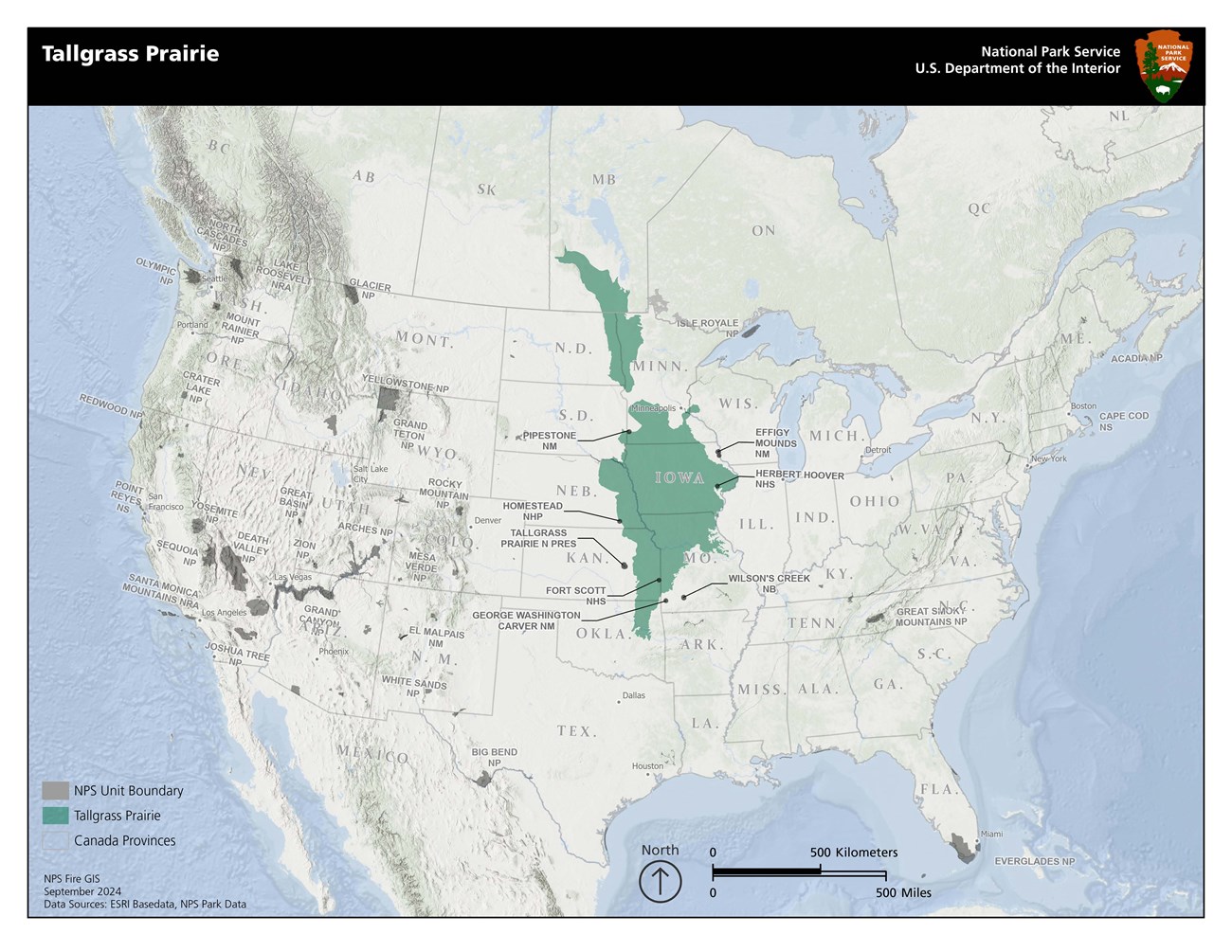Last updated: March 4, 2025
Article
Wildland Fire in Tallgrass Prairie: Midwestern United States
- Duration:
- 6 minutes, 9 seconds
Learn about how the Midwest Region of the National Park Service uses prescribed fire to preserve the tallgrass prairie at many National Park Service sites.

NPS
Distribution and General Characteristics
Historically, tallgrass prairies covered large parts of Nebraska, North and South Dakota, Minnesota, Iowa, Kansas, and Illinois, and extended into the more eastern states in the Midwest. Tallgrass prairie is made up primarily of grasses and forbs, with occasional shrubs and trees and is further characterized by relatively moist soils. As the name implies, the dominant grasses can grow to over 6 feet tall.

NPS/K. CANNON
Historic Role of Fire
Tallgrass prairies depend on fire to maintain ecosystem stability and diversity. Before European settlement of these grasslands, fires were frequent, occurring every 1-5 years. If fire was excluded, the tallgrass prairie would vanish, and shrubs, trees and exotic grasses would dominate the ecosystem.

NPS
The time of year during which these fires are ignited is of critical importance. Plant recovery following a prairie fire is fastest in the spring and fall when soil moisture is high and plants are not producing seeds. Growth of native species such as big bluestem, little bluestem and Indian grass increases significantly following a fire. Introduced species that initiate growth earlier in the spring and continue growing later in the fall than native species can be placed at a disadvantage by properly timed spring and fall fires, since the introduced species do not grow as quickly under these conditions.
If fire was excluded, the tallgrass prairie would vanish, and shrubs, trees and exotic grasses would dominate the ecosystem. Before European settlement of the grassland, naturally occurring fire helped to maintain the grasslands.
Current State and Management Actions
Today, less than 4% of the original tallgrass prairie remains. Many of the remaining prairies are managed by prescribed burning.. Prescribed fire is usually introduced on a two to five year cycle. One benefit of fire in this community is the reduction or elimination of invasive plants, thereby helping to shape and maintain the prairie.
Further Reading
Tags
- effigy mounds national monument
- fort scott national historic site
- george washington carver national monument
- herbert hoover national historic site
- homestead national historical park
- pipestone national monument
- tallgrass prairie national preserve
- wilson's creek national battlefield
- midwestnps
- kansas
- prescribed fire
- wildland fire
- learning in depth
- fire facts
- fire in ecosystems
- fire ecology
